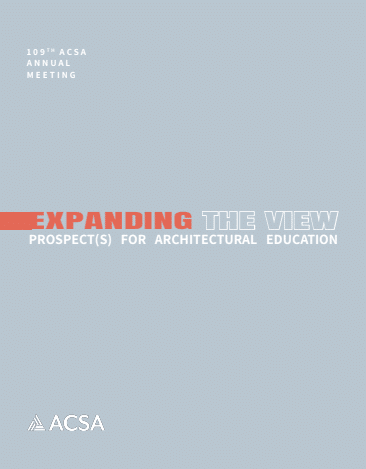Author(s): Bruce Wrightsman & Michael L. Hughes
The processes and productions common to academic design-build programs have been well documented in books and popular media over the past twenty-five years. (reference- list of examples/books). Through these texts, we have come to know the paradigm in terms of the focus on full-scale making, collaborative learning and community engagement exemplified by the work at Yale Building Studio, Rural Studio and Studio 804. A review of the current literature on ‘design-build’ education reveals a bounty of images of students doing construction along with photos of the often-beautiful outcomes dominate the published material. The mytho-poetic power of aesthetic seduction overshadows the more banal minutia associated with budgeting, supply chain management, scheduling and legal contract that equally define the reality of design-build teaching and learning. The novelty of the physical, full-scale ‘build’ along with the resultant products is celebrated as evidence of a return to a lost tradition of making. The same bias that privileges the initial act of construction and the end project obscures critical evaluation of the outcomes. We seldom ask if the projects succeeded beyond the scope of the academic studio just as we do not typically articulate the criteria by which we would evaluate success. Is it enough that the students learned something; or at least say they did? Is it success only evidenced by elegant photos and peer-reviewed awards? What happens after the ribbon cutting and the awards? What are the realities of these architectural projects for the people who occupy them after the students and faculty depart? Are the projects playing a positive role in the communities they intended to serve? What are the legacies these structures built by novice, (at best), student builders? In Architecture: the Story of Practice Dana Cuff challenges the academy by saying that, “…the nature of studio work must be revised to better prepare students for collaborative practice. Specifically, studio problems that require teams to solve them and studio problems that require negotiation with actual clients or consultants will help teach collaborative skills.”2 This paper seeks to expand the normative skill set associated with design-build to include long-term planning and assessment. Specifically, we will conduct a post-occupancy evaluation of three celebrated, (published and/or award winning), civic design-build projects from three different universities. The goal of the paper is not to reinforce or confirm the legitimacy of the individual projects or design-build education. Rather, the paper aims to foster deeper, more honest discourse on the impact(s) and the legacies these projects have on the community and environment while also addressing the challenges imposed by administrative and institutional structures within academia.
https://doi.org/10.35483/ACSA.AM.109.21
Volume Editors
ISBN
978-1-944214-37-1

 Study Architecture
Study Architecture  ProPEL
ProPEL 
